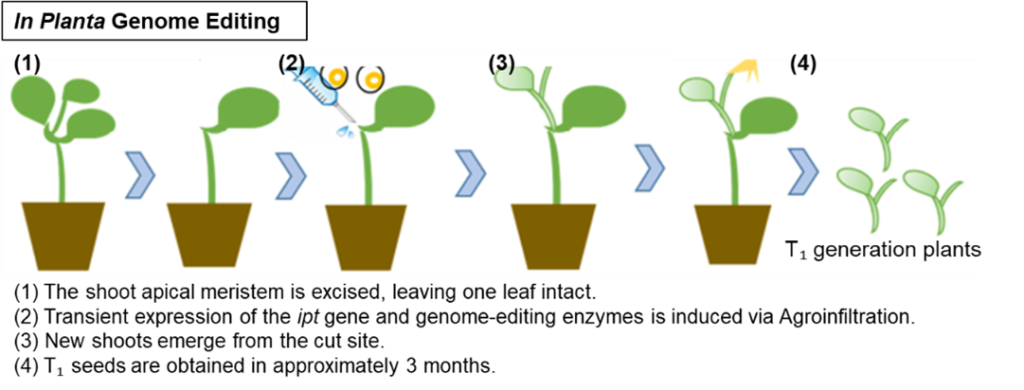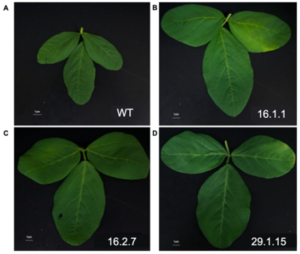Advantages
- This method does not require transformation or tissue culture, enabling genome editing in recalcitrant plants like soybean.
- There is no need to screen for null segregant individuals.
- It is applicable to a wide range of plant species where Agrobacterium-mediated transformation is feasible, including Solanaceae, Asteraceae, Cucurbitaceae, and Fabaceae.
 |
Technology Overview & Background
Conventional plant gene modification via genome editing requires the creation of transformants and tissue culture, making its application difficult in species like soybean and Lotus japonicus, where tissue culture is challenging.
Professor Kenji Miura and his team at the University of Tsukuba developed the “Tsukuba System,” a transient protein expression system in plants that uses a Gemini virus-derived vector delivered via Agrobacterium. In this method, the vector is introduced into cut stems or leaves to transiently express a cell division-promoting factor along with Cas9/gRNA. This approach successfully induces mutations in planta, allowing for the simple generation of genome-edited crops from regenerated shoots.
This technique bypasses the need for conventional transformation and tissue culture and can be applied to a broad range of plants amenable to Agrobacterium-mediated gene transfer, including the Solanaceae, Asteraceae, Cucurbitaceae, and Fabaceae families. It is expected to enable the efficient production of genome-edited individuals and extend the application of genome editing to plants that have been traditionally difficult to modify.
Data
- In planta genome editing in soybean: The system was used to target GmPPD1 and its homolog GmPPD2, which are involved in photoperiodism and flowering time. Diverse mutations, including insertions, deletions, and substitutions, were confirmed in the target sequences. These mutations were inherited by the T1 generation, where phenotypic changes such as enlarged leaves were also observed (Figure).
- Genome editing was also successfully used to target the GmFAD2 and GmFAD6 genes to suppress the synthesis of linoleic acid, a compound responsible for the “beany” flavor in soybeans.
 |
Publication(s)
Yata. A., et. al., Front Plant Sci. 2022 https://doi.org/10.3389/fpls.2022.1027004
Patent(s)
JPB 6850041, WO 2021/020421, WO2025/023239
Principal Investigator & Academic Institution
Dr. Kenji Miura (University of Tsukuba)
Expectations
The University of Tsukuba is seeking to license this technology to seed companies and agritech firms. A paid Material Transfer Agreement (MTA) for the vectors is also available for evaluating the genome editing of specific target genes.
Project ID:WL-04918a


